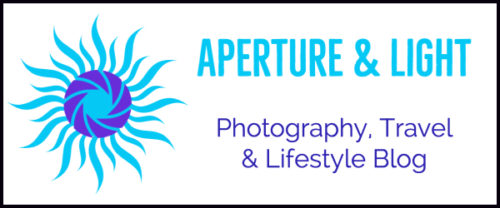You’re ready to buy your first camera. Or, you’re ready to purchase a camera, and it’s been decades since you last used one. Excitement is rocking in your head and cash is burning a hole in your pocket. A golden road lies ahead!
Those images on Instagram? Game on, you can do that. Those photos on coffee table books? Piece of cake. The images from your Facebook groups? Get ready, you’re almost in the game.
Sure, you’re smartphone takes great shots. But you want the feel of the camera in your hands. The ability to take your ideas and translate them to works of photography art. From your eye, using your perspective and vision.
Wait. Are you really ready?
By the end of this blog, you’ll know if you’re ready to jump in to the photography fray. We’re sharing 2 ideas and tips that help ensure you’re ready to buy and get you up to speed quickly.
Before you buy your first camera, consider these critical success factors.
- You love seeing those amazing images across media and social platforms. What do you want to photograph and why?
- The idea of a camera is exciting. The thought of learning how to use the camera and how to develop your skills? You’ll figure it out.
It’s Easy to Buy Your First Camera. Knowing What You Want to Photograph is the #1 Success Factor
There are many, many reasons to buy a camera. But, if the answers to the above questions are not yet known, let’s start with some self-reflecting.
Nope, I’m not a psyche expert but I do know quite a bit about photography behavior. I can just about predict who will and who won’t use their gear by the answers to the two questions above.
As much as you love seeing awesome images, what do you intend to photograph? Kids, grandkids, family, nature, landscapes, flowers, street?
If you don’t know what motivates you to pick up the camera, think about what motivates you. What you love and enjoy. What you’d enjoy photographing, sharing or printing for your wall.
See our article on : Shoot What You Love, Love What You Shoot. If you don’t know what that is yet, wait to buy your camera until you have some ideas as to what you’d photograph.

Before You Buy, What is Your Learning Plan?
How will you get to know the controls, the camera settings and shooting techniques? If you don’t have a plan to learn, or are not willing to invest a few hours into seeing how your camera operates, consider waiting until you do.
It takes time to get started and self-patience as your photography evolves.
Today’s camera’s are easy to use. They’re intuitive. Both statements are true, after you know how to use your camera. The other good news is there’s many resources to get you going quickly.
Today’s cameras are machines. With more features than a TV remote control, the world of creativity is at your fingertips. To access those features, to understand how they work and work together, requires learning time. It’s not rocket science, but it requires an investment of learning.
There’s the initial curve of learning the camera, shooting settings and post processing. Then, it’s the growing evolution of you as an artist and photographer.
Pulling It All Together
My first tip once you have your camera? Grab your new camera and manual. Woo-hoo!
As your batteries are charging, review (not read…yet) the manual’s table of contents, the diagrams of your camera’s dials and the getting started/setup sections.
After your batteries are charged, grab your new camera. With camera in hand, read the manual and follow the setup and getting started sections. When you follow the instructions, you have a base to go back to if needed.
Don’t start shooting yet. Patience!
Then, scroll through the menus of your camera multiple times. Many of the menu items won’t make sense at first, but knowing where they are pays off in your learning curve.
Pop on a lens and then with your camera on, play with the command dials, buttons, switches, the back screen. Focus. Manually. Then with autofocus.
How to Get Great Images Fast
Knowing the technical part of your camera is a must. However, how do you tie the features of the camera to artistry? One suggestion. A fast read e-book that’ll get you started shooting really good images within the first few chapters.
I’m not kidding.
When I read Jim Harmer’s ebook of Improve Your Photography: How Budding Photographer’s Can Get Pro Results (Amazon), my learning curve escalated fast. Easy read, big text and great illustrations. I also read Jim Harmer’s ebook of Improve Your Wildlife Photography (Amazon) as I started with wildlife and nature. The tips and techniques work to this day.
When I read the first few chapters with camera in hand, I literally understood how to use key features and settings to create my desired types of shots. I also started shooting in raw format as opposed to jpeg using his advice. Very smart move!
From there it was up to me to refine my technique and continue the learning curve. And revisiting the manual and the ebook.
Years later, the evolution continues. There’s early images I look back on and think, yeah, that’s still a pretty good image. Then, there’s some that I shake my head (I have those today too!). What was I thinking? I was learning and the ‘bad’ images are an equal part of the journey.
When you know what inspires you to learn, to pick up the camera, to wake up for that moment, to hike up that trail, it’s time to buy your first camera!
Need some tips on selecting you camera? Our blog of How to Buy Your First Camera helps you select the camera and lenses right for you.
Related reading: 18 Signs of Photography Addiction

